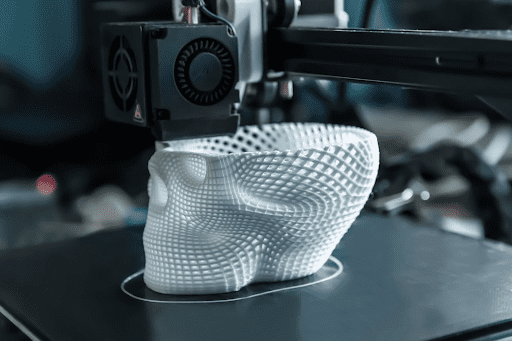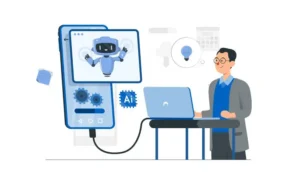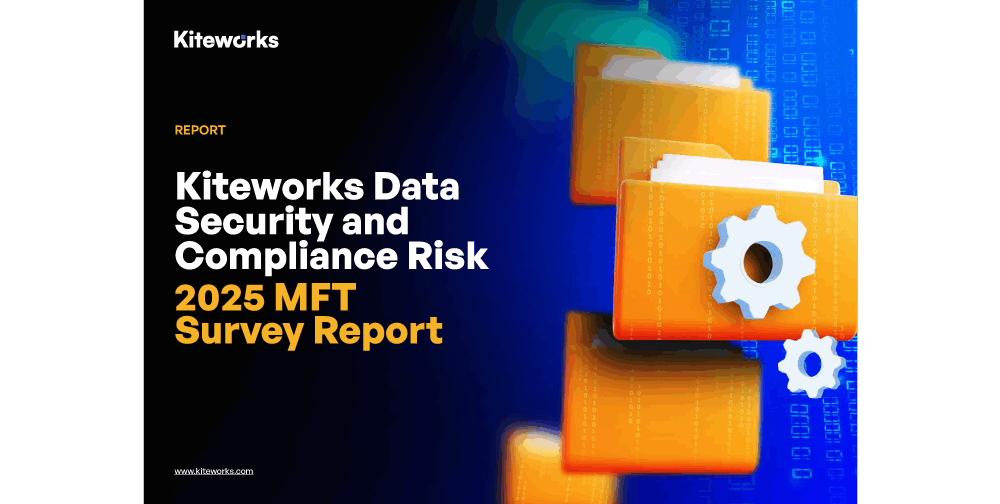AI is changing how people approach 3D printing. Tasks that once required manual setup and long adjustments are now handled automatically. From modeling to slicing, printers are becoming smarter, faster, and far more reliable than before.
A Smarter 3D Printing Experience
Modern 3D printers can now predict and fix common problems before they happen. They adjust temperature, layer height, and speed without constant supervision. Printing has become easier, especially for beginners who used to struggle with endless trial and error.
This level of automation makes printing smooth and predictable. Instead of wasting time correcting settings, users can focus on creating and experimenting. The technology learns from each print, improving accuracy and quality with every project.
Brands like Creality have introduced several smart features into their modern 3D printers, like K2 Plus, giving users access to automatic calibration, advanced slicing, and real-time monitoring tools that save both time and material.
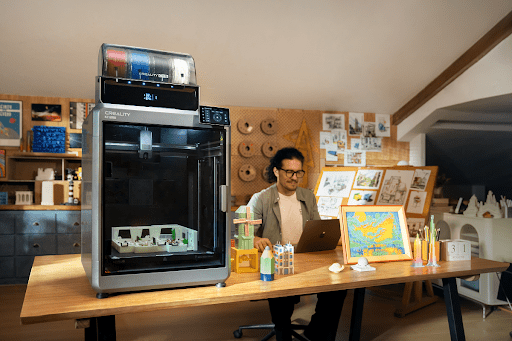
Benefits of Smarter Printing
Smarter printing systems help users in several important ways:
- Time saving: Automatic setup and optimized slicing reduce preparation time.
- Material efficiency: Supports are generated only where necessary.
- Reliability: Each print is monitored for stability and precision.
- Ease of use: Beginners achieve results that look professional.
These changes remove the guesswork from 3D printing and help users build confidence quickly.
From Ideas to Ready-to-Print Models
Designing 3D models used to be difficult and time-consuming. Modern modeling tools now convert drawings, sketches, or short descriptions into complete 3D files. The system corrects holes, overlapping edges, and thin walls automatically before printing begins.
This makes the creative process much faster. Anyone can turn an idea into a physical object in minutes rather than hours. The model is checked for strength, printability, and balance before being sent to the slicer.
Many ecosystems, including Creality’s design and slicing platforms, now support these smart design features. They make it simple to prepare models without needing expert CAD skills.
Smarter Slicing for Better Results
Slicing defines how a model is printed layer by layer. Older slicers required careful tuning. Smart slicing now studies the model and chooses the right infill, layer thickness, and temperature automatically for the best balance of speed and quality.
This system adapts dynamically. It uses thinner layers for curves and thicker ones for flat surfaces. The result is smoother details and shorter print times without reducing accuracy. Users spend less time adjusting settings and more time printing.
Smarter Supports and Reduced Waste
Support placement once wasted a lot of material. Now, slicing programs create supports only where needed. They also use lighter structures that remove easily, saving both time and filament.
For resin printers, lift speeds and exposure times adjust automatically. These small changes prevent suction or layer separation, two of the most common causes of failed prints. Consistent quality becomes easier to achieve, even for complex designs.
Monitoring Every Layer in Real Time
Real-time print monitoring has become one of the most valuable improvements in 3D printing. Cameras and sensors observe each layer as it’s built. If a problem appears, such as warping or poor adhesion, the printer pauses instantly.
This saves hours of wasted work. Instead of returning to find a failed print, users receive alerts through connected apps and can fix the issue immediately. It’s a simple safeguard that makes long prints less stressful.
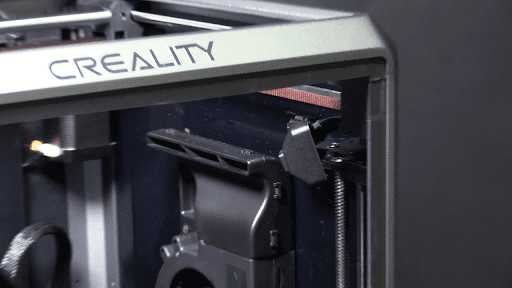
Creality includes such monitoring technology in many of its printers. The system identifies printing errors quickly and ensures that each job finishes cleanly and efficiently.
Key Advantages of Live Monitoring
- Prevents failed prints before they waste time or material.
- Keeps prints consistent across different sessions.
- Allows remote tracking through mobile devices.
- Reduces supervision time for long print jobs.
These improvements turn 3D printing into a process that runs confidently and safely without constant manual checking.
Learning and Improving Over Time
Each completed print teaches the system something new. It remembers temperatures, materials, and speeds that worked well. These records create personalized profiles that make future prints more accurate and predictable.
Over time, the printer adapts to the user’s style. It selects the best settings automatically, ensuring steady quality without extra adjustments. Even small changes, such as room temperature or material type, are factored into the next print.
For users managing multiple printers, this learning ability ensures that all machines perform consistently. It also helps detect when one printer needs cleaning, calibration, or new parts before problems appear.
Local vs. Cloud-Based Processing
Some smart features run directly on the printer, while others work through connected software. Local processing gives faster feedback and works even without an internet connection. It handles calibration, slicing, and print monitoring.
Cloud-based systems analyze larger data sets to make long-term improvements. They handle remote monitoring, job scheduling, and data storage. The combination of both creates a balanced and flexible workflow for home users and professionals alike.
Users can choose between privacy-focused local setups or cloud systems that provide detailed insights and performance tracking. Both paths lead to better print quality and smoother operation.
Fewer Errors, Faster Printing
Smarter 3D printing systems also help users troubleshoot. They can recognize patterns that cause common issues such as stringing, weak adhesion, or poor layer bonding. The system then suggests exact settings to fix those problems.
When a nozzle clogs or layers shift, the printer doesn’t just stop; it gives feedback on what likely caused the issue. This guidance helps new users learn and prevents repeated mistakes. Each print becomes a small learning experience that leads to improvement.
The Future of 3D Printing
Smarter technology is making 3D printing more accessible than ever before. It turns a complex process into something creative and dependable. With features that handle calibration, slicing, and monitoring automatically, users can focus on design instead of constant adjustment.
Brands like Creality are proving how practical this evolution can be. Their printers show how intelligent systems reduce waste, shorten print times, and improve reliability for everyone from hobbyists to small business owners.
As this technology advances, 3D printers will continue to adapt, learn, and deliver better results with less effort. Printing will become less about fixing problems and more about creating without limits.

